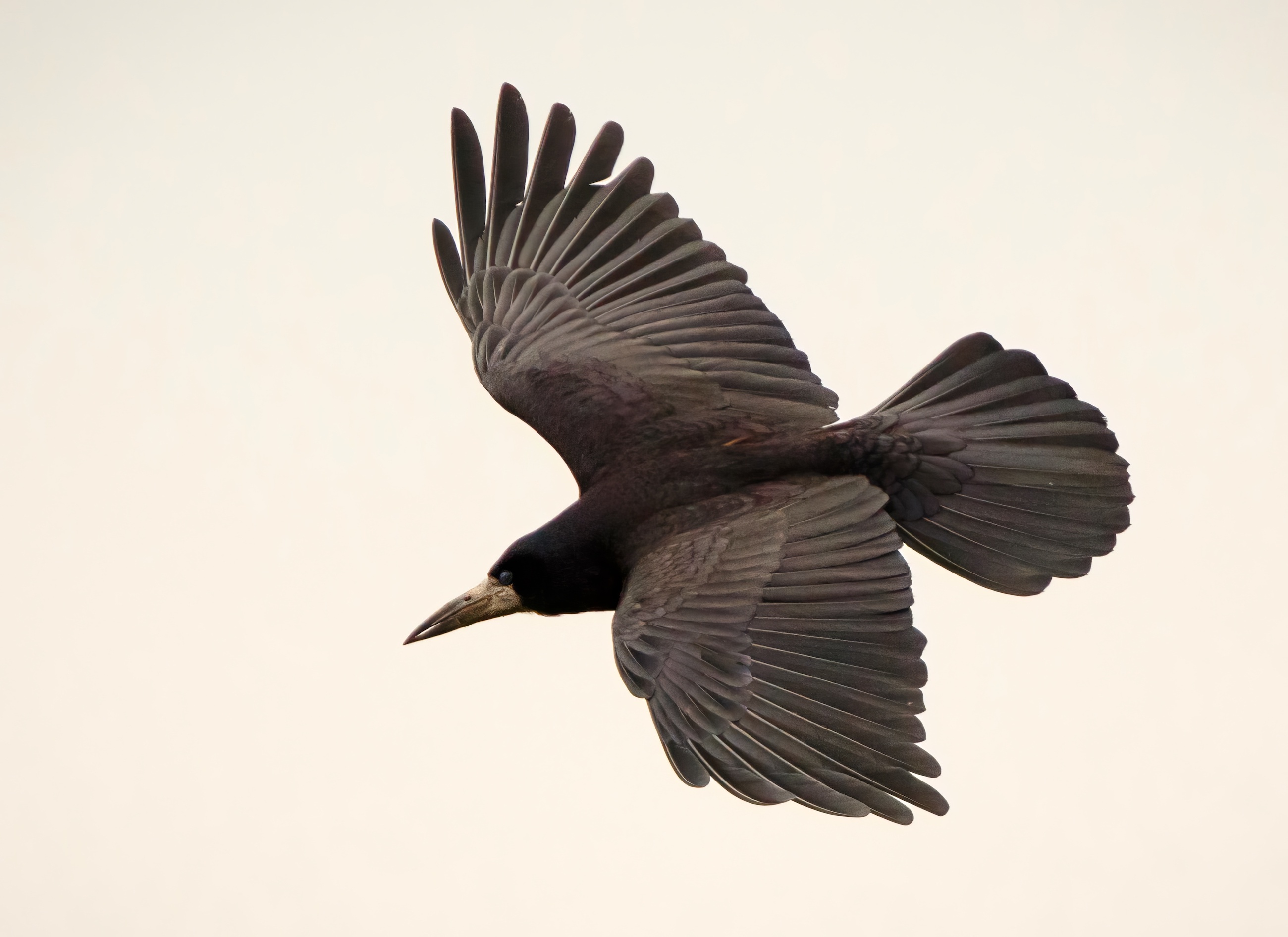Rook Corvus frugilegus

Against the increasing agricultural intensification over the last 50 years which has seen some alarming decrease in farmland birds, Rook has managed to maintain a steady increase through the whole period. The Atlas put the population at around 26,000 pairs in the late 1980s and by 2016 the APEP4 adjusted population was put at 38,000 pairs. It is the third most common bird in the county based on total bird count in the 2019 BBS. It is however to some extent patchily distributed being absent/much less frequent in some of the more intensively farmed areas that lack sufficient tree cover to provide nesting opportunities, especially near the coast.
Rooks are resident over the western and southern parts of their western European range, including British breeding birds, but migratory to the north and east. Ringing recoveries indicate an intricate pattern of wintering areas for migratory populations, most of which forsake breeding grounds during October. There have been irregular influxes from the Baltic and Dutch breeding population to eastern England and birds ringed in The Netherlands and Russia were recovered in Lincolnshire in the 1950s, although these influxes appear to have become very infrequent since then.
Rooks, like Carrion Crows, are potentially very long lived and the BTO ringing archive shows that a bird of just over 22 years of age holds the current longevity record. One ringed in Nottinghamshire in May 2007 was recovered in the county in February 2017 when nine years and nine months old, victim of a domestic animal. Another Lincolnshire bird ringed near Louth as a nestling in 1993 was shot near Alford in 2009 when more than 16 years old.
